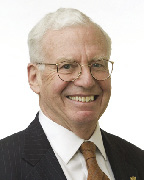The Federal Reserve Bank Board is anticipating two major transitions - transitions to normalcy in the capital markets and to new leadership in the Fed chair. The capital markets are preparing, already anticipating upward movement in rates over the yield curve. Leadership is a more speculative matter. The transparency, rigor and creative and courageous flexibility of the Fed during Ben Bernanke's chairmanship will hopefully be a legacy and foundation for continuing recovery.
In June, the Fed released Economic Projections of Federal Reserve Board Members and Federal Reserve Bank Presidents. The forecast includes GDP, unemployment and inflation for 2013, 2014, 2015 and longer run. Although the Fed has previously stated the appropriate timing for increasing rates, a component of firming policy, will be late 2015, the forecast unemployment rate for 2015 is 5.8% to 6.3%, below the stated Fed target of 6.5%. However, most board members (11 of 19 participating in survey) continue to feel 2015 will be the appropriate timing for policy firming. Further, consensus for target for federal funds at yearend 2014 is below 1% and below 2% for yearend 2015, at 4% for longer run (five or six years convergent and stabilized). The targets of 6.5% unemployment and 2% inflation are arguably the objective goals described in the Economic Projections. Revised Fed Economic Projections will soon be released this month for September 2013.
Projections and forecasts are informed by reported and revised economic data. The Fed has been scrupulously monitoring economic data and trying to reconcile performance data with targets and capital behaviors and market expectations. Each month forward, the Fed's efforts in this regard and its forecasts and communications - call it the FEDCAST - will act to stabilize the markets as the easing is implemented, initially through reductions in the monthly $85 billion bond purchases and then through the increases in Fed rates. The Fed has been effective in managing expectations through this recovery; however, returning to normalcy in the marketplace will be an ongoing challenge without precedent.
The next few months of transition are likely to cause volatility in the capital markets with or without FEDCAST continuity. In the Boston Globe on September 5, Neil Irwin (Washington Post columnist and economics editor for the Post's Wonkblog) offered his watch list which included Syria and the oil markets, fiscal standoff in Washington again, monthly employment data, Fed leadership clues from Summers and Yellen, rippling effects of interest rate movements, and the recovering economy. For many the list is too short; for some too long. The FEDCAST is paramount if not the most important for market watchers.
David Kirk, CRE, MAI., FRICS, is principal and founder of Kirk & Company, Real Estate Counselors, Boston.
Tags:









